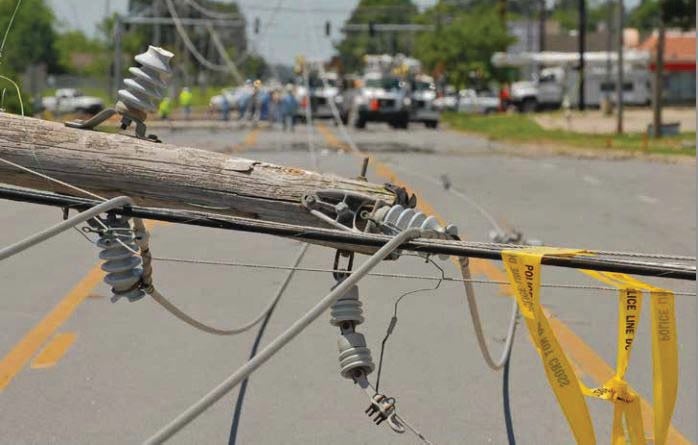 According to a recent reliability report, 67% of electrical outage minutes were weather related, with contributing factors of lightning (6%), weather (31%), and vegetation (30%), typically due to wind, ice, or snow encountering power lines, poles and transformers.
According to a recent reliability report, 67% of electrical outage minutes were weather related, with contributing factors of lightning (6%), weather (31%), and vegetation (30%), typically due to wind, ice, or snow encountering power lines, poles and transformers.
Resiliency of the grid is an important concept being discussed in the electric industry today. This concept recently made headlines in the wake of Hurricanes Irma and Maria, which caused extraordinary damage to Puerto Rico’s electric grid resulting in the longest sustained outage in U.S. history. Lack of resilience became the go-to phrase to describe Puerto Rico’s grid. Here in Illinois, what does grid resiliency mean for you?
Resiliency is many things – it’s reliability in your electric service, it’s our ability to efficiently restore your power, it’s being able to meet the demands of new technology and it’s how we serve you with various generation sources without skipping a beat. Ultimately, resilience is how we deliver on our promise to improve your quality of life.
When it comes to having a resilient electric grid, it begins with a system that is designed and built to withstand high winds, powerful storms, cybersecurity threats and other disruptions that could result in outages. A resilient grid is also flexible and adaptable by allowing different types of generation – such as wind, solar, coal and hydro – to seamlessly work together to provide you with safe and reliable power. The way our systems react to advancements in technology – from demand response investments to serving the needs of electric vehicles – all factor into the resilience of our grid.
Resiliency is a 24/7, 365-days-a-year task. Whether it’s the power lines, substations or generation facilities on our grid, it takes proactive maintenance to keep them running smoothly.
With thousands of consumers without power for months, the lack of resiliency in Puerto Rico’s power grid wasn’t solely caused by hurricane damage; it was the result of years of neglect in taking care of their system and preparing for a worst-case scenario.
In a similar way to how we maintain our vehicles with regular oil changes, inspections and tire rotations, a grid must also be properly maintained.
Maintaining our 4,520 miles of line takes hard working, dedicated employees who make safety and reliability a priority every day. Employees provide service to over 13,500 meters in a ten county area of East Central Illinois. Throughout the year, our employees regularly conduct pole and line inspections. Our ultimate goal is to find a problem before it becomes one. If we find a pole that has damage, we replace that pole. Doing so ensures that the pole is as strong – or as resilient – as it can be.
We strive to prevent problems and our goal is to always restore power as quickly as possible. Our aim is to have a system that can survive even the most devastating situations.
Living in Illinois, we know that power outages can occur, especially during spring and summer storm seasons. We have confidence in the resiliency of our system to recover from the situation with minor disruption.
In the dictionary, resilience is defined as “the ability to bounce back, recover quickly and go back into shape or position after being stretched.”
When it comes to providing our members with resilient service, this is what we work toward – day in and day out!
